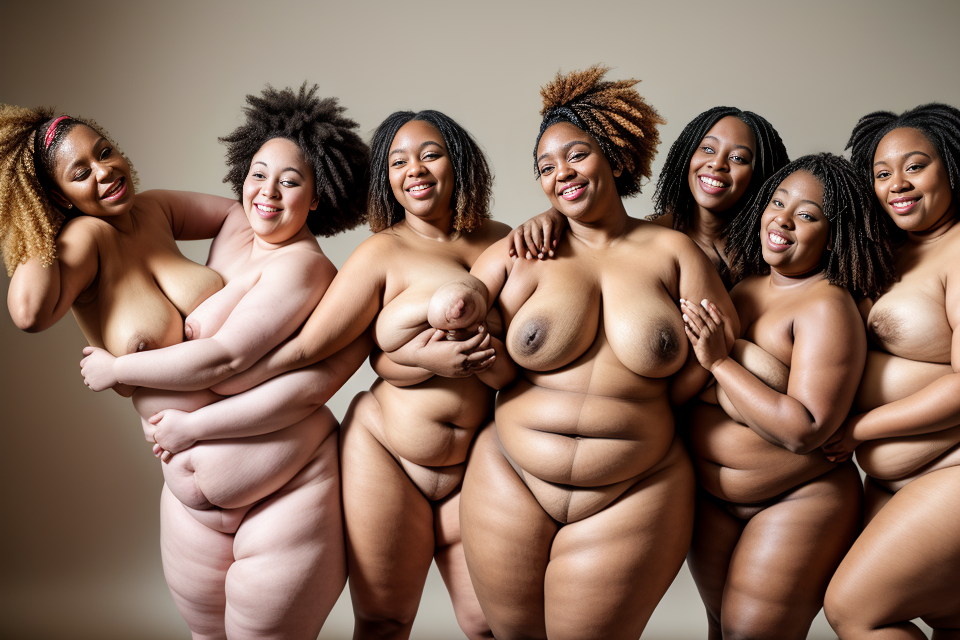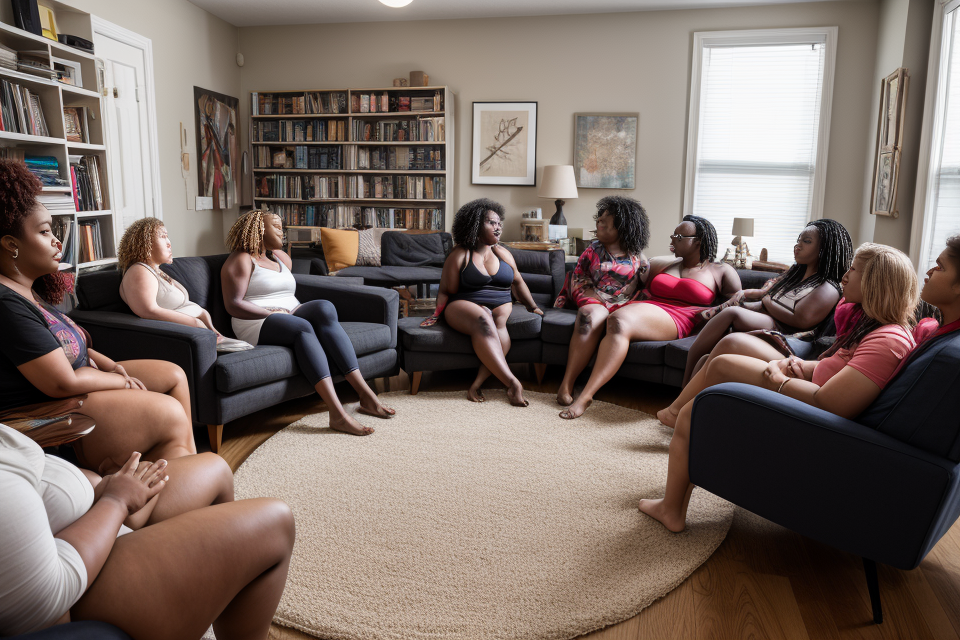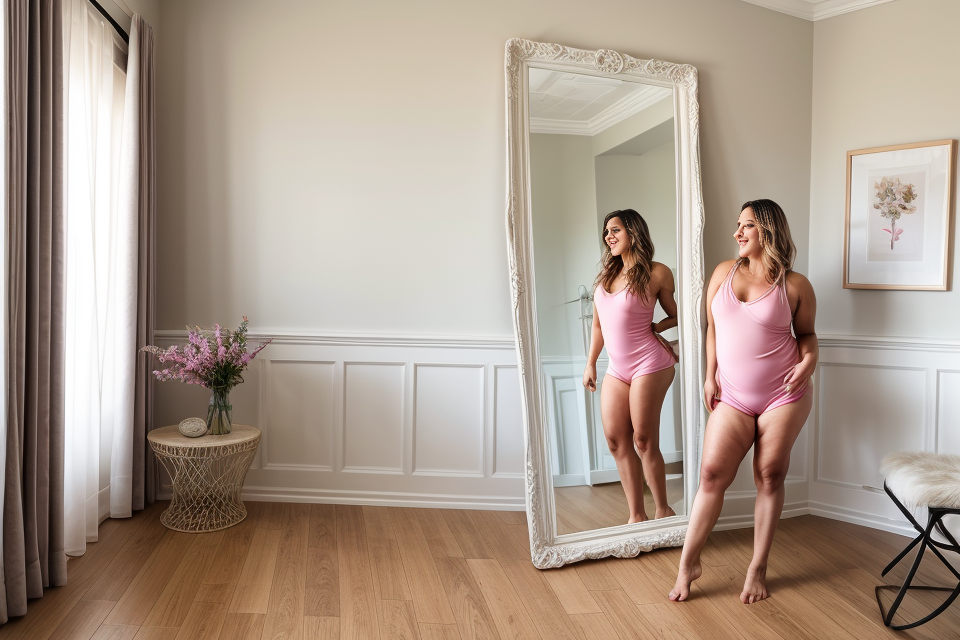
Body positivity is a movement that has gained momentum in recent years, encouraging individuals to embrace and love their bodies for all their unique qualities and imperfections. But who is behind this body-positive revolution? This article delves into the history and key players of the body positivity movement, uncovering the inspiring individuals and organizations that have championed this message of self-love and acceptance. From social media influencers to activists and advocates, this article shines a light on the trailblazers who have made body positivity a global phenomenon. So, let’s dive in and discover the stories behind the movement that is changing the way we think and talk about our bodies.
The Origins of Body Positivity
Historical Context
The historical context of the body positivity movement is rooted in the evolution of societal beauty standards and the struggle for individuals to conform to these standards. Throughout history, societal ideals of beauty have shifted, often placing pressure on individuals to attain an unrealistic physical appearance.
Body Ideals and Social Standards
Throughout the ages, societal ideals of beauty have varied greatly. In ancient Greece, for example, a lean, athletic physique was considered attractive, while during the Renaissance, a fuller figure was celebrated. However, as industrialization and modern media emerged, a more uniform standard of beauty began to prevail. This standard emphasized thinness, often at the expense of other physical attributes.
The Emergence of the Body Positivity Movement
The emergence of the body positivity movement can be traced back to the late 20th century, as individuals began to challenge traditional beauty standards and promote acceptance of all body types. The movement gained momentum with the rise of social media, providing a platform for individuals to share their stories and advocate for body positivity.
One key figure in the early stages of the movement was blogger and activist, Kate Harding. In her book, “The Fat Girl’s Guide to Life,” Harding challenged societal beliefs about weight and size, encouraging readers to embrace their bodies and challenge discrimination.
Another influential figure in the body positivity movement is Tess Holliday, a plus-size model and activist. Holliday has used her platform to promote body positivity and challenge unrealistic beauty standards in the fashion industry.
Today, the body positivity movement continues to gain momentum, with individuals and organizations working to promote self-love and acceptance of all body types. This includes efforts to diversify media representation, promote health at every size, and challenge discrimination based on appearance.
Key Players in the Body Positivity Movement
Activists and Advocates
Sharing Personal Narratives
Activists and advocates have played a significant role in the body positivity movement by sharing their personal narratives. Many have taken to social media platforms to share their struggles with body image and the journey towards self-acceptance. By sharing their stories, they have inspired others to do the same, creating a community of individuals who support and uplift one another.
Challenging Beauty Standards
Activists and advocates have also challenged traditional beauty standards that have been perpetuated by the media and society. They have called out unrealistic and harmful portrayals of bodies in advertising and entertainment, and have advocated for more inclusive and diverse representations of beauty. By pushing back against these standards, they have helped to create a more accepting and accepting culture.
Empowering Others to Embrace their Bodies
Activists and advocates have empowered others to embrace their bodies by promoting body positivity and self-love. They have organized events, workshops, and campaigns that focus on self-acceptance and body positivity. They have also collaborated with brands and organizations to create more inclusive and body-positive spaces. By doing so, they have helped to create a movement that values all bodies and promotes self-love and acceptance.
Influential Blogs and Platforms
Instagram has emerged as a powerful force in the body positivity movement. With over 1 billion active users, the platform has become a go-to destination for individuals seeking inspiration, support, and representation in their journey towards self-love and acceptance.
Promoting Positive Body Image
- The platform is home to numerous influencers and everyday users who share their stories and experiences related to body positivity. These individuals often post unfiltered images of themselves, showcasing their natural beauty and highlighting the importance of self-acceptance.
- Through these posts, Instagram is helping to reshape the traditional beauty standards that have long been perpetuated by mainstream media. By promoting positive body image, the platform is empowering individuals to embrace their unique features and to feel confident in their own skin.
Celebrating Diversity and Inclusivity
- Instagram is a melting pot of diverse voices and perspectives, with users from all walks of life coming together to share their stories. The platform is particularly known for its inclusivity, with users of all shapes, sizes, colors, and backgrounds finding a sense of community and belonging.
- This celebration of diversity is helping to break down barriers and to challenge societal norms. By showcasing the beauty and strength in differences, Instagram is fostering a more inclusive and accepting world.
Encouraging Self-Love and Acceptance
- At the heart of the body positivity movement is the message of self-love and acceptance. Instagram is filled with individuals who are spreading this message and inspiring others to do the same.
- From body-positive affirmations to daily reminders to practice self-care, the platform is a constant source of encouragement and support. By fostering a culture of self-love and acceptance, Instagram is helping individuals to feel empowered and confident in their own bodies.
Tumblr
Tumblr is a microblogging and social networking site that has played a significant role in the rise of body positivity. With its unique features, Tumblr has become a platform where users can share their stories, resources, and ideas related to body positivity.
Sharing Stories and Resources
One of the main reasons why Tumblr has been so influential in the body positivity movement is its ability to allow users to share their personal stories and experiences. Many users have taken to Tumblr to share their struggles with body image and how they have learned to love and accept their bodies. These stories have inspired others to do the same and have helped to create a community of supportive individuals who are all working towards the same goal.
In addition to sharing personal stories, Tumblr has also become a hub for resources related to body positivity. Users can find articles, videos, and other content that provides information on topics such as nutrition, exercise, and self-acceptance. This wealth of information has helped to educate users and empower them to make positive changes in their lives.
Providing a Supportive Community
Tumblr has also played a crucial role in providing a supportive community for individuals struggling with body image issues. The platform’s unique features, such as the ability to follow blogs and reblog posts, have created a sense of community and belonging among users. They can share their thoughts and feelings with like-minded individuals and receive support and encouragement in return.
The body positivity community on Tumblr is incredibly diverse, with users of all ages, genders, and backgrounds coming together to support one another. This diversity has helped to create a safe and inclusive space where everyone feels welcome and accepted.
Promoting Positive Body Image and Social Justice
Finally, Tumblr has played a significant role in promoting positive body image and social justice. Many users on the platform are advocates for body positivity and use their blogs to spread this message. They challenge traditional beauty standards and promote the idea that all bodies are beautiful and worthy of love and respect.
In addition to promoting positive body image, many users on Tumblr are also advocates for social justice. They use their platforms to raise awareness about issues such as fatphobia, ableism, and discrimination based on appearance. By promoting these important issues, Tumblr has become a powerful force for change in the world of body positivity.
Blogs and Online Magazines
Offering Positive Messaging
One of the key ways in which blogs and online magazines have contributed to the rise of body positivity is by offering positive messaging around body image and self-acceptance. Many of these platforms have been instrumental in promoting the idea that all bodies are worthy of love and respect, regardless of size, shape, or appearance.
By sharing stories and experiences of individuals who have embraced their bodies and challenged societal beauty standards, these blogs and magazines have helped to shift the narrative around body image and encouraged readers to embrace their own unique beauty.
Providing Education and Resources
In addition to offering positive messaging, blogs and online magazines have also played a critical role in providing education and resources around body positivity. These platforms have served as a hub for information on topics such as nutrition, fitness, and mental health, providing readers with the tools and knowledge they need to make informed decisions about their bodies.
Through in-depth articles, expert interviews, and practical tips, these blogs and magazines have helped to demystify the complex and often confusing landscape of body image and self-acceptance, empowering readers to take control of their own bodies and lives.
Fostering Community and Support
Another way in which blogs and online magazines have contributed to the rise of body positivity is by fostering a sense of community and support among their readers. By creating safe and inclusive spaces for individuals to share their experiences and connect with others who are on similar journeys, these platforms have helped to build a movement around body positivity that is both empowering and transformative.
Through comment sections, social media channels, and online forums, readers are able to engage with one another, offer support and encouragement, and build meaningful connections that go beyond the digital realm.
Overall, the influence of blogs and online magazines on the rise of body positivity cannot be overstated. By offering positive messaging, providing education and resources, and fostering community and support, these platforms have played a critical role in shaping the conversation around body image and encouraging individuals to embrace their bodies with love and acceptance.
The Impact of Body Positivity
Changing the Narrative Around Beauty
The body positivity movement has had a profound impact on how society views and talks about beauty. For too long, traditional beauty standards have dictated that only a certain body type is considered attractive, and anyone who deviates from this norm is deemed unattractive or unworthy. However, the body positivity movement is working to change this narrative and promote a more inclusive and diverse understanding of beauty.
Reth
FAQs
1. What is body positivity?
Body positivity is a social movement that promotes acceptance and appreciation of all body types, regardless of size, shape, or appearance. It encourages individuals to embrace their bodies and celebrate their unique features, rather than striving for an unrealistic and often unattainable ideal.
2. Who started the body positivity movement?
The body positivity movement has its roots in the fat acceptance movement of the 1960s and 1970s, but it has evolved and gained momentum in recent years thanks to social media and the internet. Today, there are many individuals and organizations who are behind the movement, including activists, influencers, and everyday people who are passionate about promoting body positivity.
3. Why is body positivity important?
Body positivity is important because it challenges traditional beauty standards that often prioritize thinness and perfection. By promoting acceptance and appreciation of all body types, body positivity helps to combat body shaming, negative self-talk, and eating disorders. It also helps to create a more inclusive and diverse society, where individuals of all shapes and sizes feel valued and respected.
4. Who are some prominent figures in the body positivity movement?
There are many individuals who have been instrumental in promoting body positivity, including activists like Connie Sobczak and Rebecca Lee Crumpler, as well as influencers like Iskra Lawrence and Hunter McGrady. Brands like Aerie and Dove have also been influential in promoting body positivity through their advertising campaigns.
5. How can I get involved in the body positivity movement?
There are many ways to get involved in the body positivity movement, including:
* Following body positive influencers and organizations on social media
* Supporting brands that promote body positivity
* Speaking out against body shaming and negative body talk
* Celebrating and appreciating your own body, as well as the bodies of others
* Educating yourself about body positivity and its importance.


